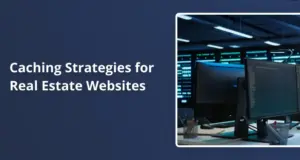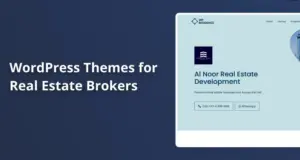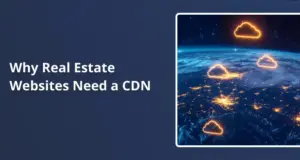Type “three-bed homes in Austin,” and the old page of ten blue links is now a bright answer box called Search Generative Experience (SGE). Inside that box are price ranges, a map sliver, and even agent names.
Tests in 2025 show that the link, which once earned the most taps, now loses about one-third of its traffic when SGE appears. That missing stream of eyes flows back to Google, away from your WordPress site, away from the forms that turn visitors into buyers.
Traffic is fuel and when the fuel line narrows, the engine sputters. A post that once drew 1,000 visitors per month might now attract only 600. If four deals came from the larger crowd, expect maybe two from the smaller one. The gap hurts, yet the fix is not magic. It is steady work: tune words, tune code, tune reach. WordPress supplies every tool you need.
How many clicks slide off the page?
Traffic drops feel abstract until you count real visits. Try this short math exercise on last year’s numbers:
- 12 000 visits sent by Google
- 3,000 leads (sign-ups, calls, property-view requests)
- 60 closed deals
That was a 25% visitor-to-lead rate and a 2% lead-to-deal rate. Now, take away one-third of those visits. The site welcomes 8,000 visitors, creates 2,000 leads, and closes maybe 40 deals. Profit decreased by one-third, while costs remained the same.
More ad spend cannot plug a leak if pages stay the same.
Doubling content output works only if that content plays by new search rules.
Numbers may swing by niche, yet the pattern repeats. Less top-of-funnel traffic equals fewer closings down the line.
Why meaning now beats plain keywords
SGE listens for full intent, not just words. A buyer voice-typing on the phone might ask, “Can I find a three-bed under $500 000 near Highland Middle with a twenty-minute commute to downtown?” That single line holds entities for beds, budget, school zone, and commute time. Pages that answer all pieces rise—pages stuffed with “homes for sale Austin” five dozen times drop.
Write like a neighbor:
Q: “Is Highland safe after dark?”
A: Police logs list three calls last month, most for minor noise. Streetlights block to block. Dogs and joggers fill the sidewalks until ten at night.
Short questions, short answers. Yoast SEO and Rank Math both ship with FAQ blocks that wrap content in schema code. SGE loves schema because it tags content in a way that a machine can read quickly. Each FAQ can also boost voice-search hits as smart speakers read that chunk aloud.
Images speak once tagged. Give every photo an ALT line that says exactly what a buyer sees, such as “Sunny kitchen with a bay window on Maple Street.” Avoid random tags like “image123.” A precise line feeds extra context to the model.
WordPress toolkit for clear semantic signals
Plugins add structure without code headaches. Three stand out:
- Yoast SEO – turns every FAQ and How-To block into a neat schema, checks reading grade, and warns when sentences run long.
- Schema Pro – adds LocalBusiness, RealEstateListing, and Review markup to pages in bulk, a lifesaver for large sites.
- SEOPress Insights – tracks ranking for entity-rich terms and links them to content gaps so you see where to write next.
Each plugin resides in wp-admin and requires minimal setup: select the schema type, fill in the easy fields, and save. The machine now reads the site the way a librarian files books—by topic, subtopic, and author—so SGE can cite your page in that answer box.
Google’s home turf: profiles, maps, reviews
SGE trusts Google Business Profile (GBP) more than any outside source. Treat GBP like your second home page. Open every tab. Fill in each blank: phone, hours, a short bio, price range, and service radius. Add ten photos of you and your listings.
Keep the feed alive. A plugin like WP Google My Business Auto Publish automatically copies each blog post to Google, so news appears everywhere at once. Weekly mini posts—open-house reminders, market snapshots, and local-fair photos—show that you stay active.
Ratings flip the visibility switch. A BrightLocal 2024 study found that agents with ratings above 4.5★ appear in “top agents” carousels eight times more often than those below four stars. Ask for reviews one day after closing while the joy is still high.
Drop a link by text and reply to each review with a warm thank-you and include one or two relevant keywords. The reply adds fresh words that keep your profile climbing.
Local pages: owning the streets the portals skip
Big portals hand out broad facts. You walk the blocks. Use that edge. Build minute-detail pages that answer the hidden questions buyers whisper:
- How loud is the train noise on Cedar Loop?
- Do coyotes wander behind Maple Park after dark?
- Does the city plan to widen Elm Road in the next five years?
Create a custom post type named Neighborhood Guide with Advanced Custom Fields. Add boxes for commute, school notes, dog parks, and flood history. Fill those boxes in plain speech. Take three photos of the playground using your phone. Embed a two-minute sidewalk stroll recorded on your lunch break with EmbedPress.
Every entry needs substance. A shallow guide bores both readers and algorithms. Aim for 400–500 words per section so that a complete guide can reach 2,000 words. Include numbers: bus-line names, average drive times, and last year’s sale prices. Google cross-checks numbers; accurate data lifts trust.
Update often. When a coffee shop opens, add a photo that week. WordPress stamps the post with a fresh, modified date. SGE prefers current data, so even a minor change can affect the ranking.
Behind-the-scenes trust: speed, structure, and phone shape
Google continues to test pages for speed and stability. WordPress sites succeed when three levers are in place: caching, media compression, and solid theme code.
Caching first. LiteSpeed Cache or WP Rocket stores pages in memory, so repeat visitors load in a blink. Enable HTML, CSS, and JS minification—that single step reduces file size by about 20%.
Media next. Serve WebP images through the same plugin. A JPEG that weighs 400 kB drops to about 120 kB as WebP at the same quality—slow networks cheer.
Theme last. Pick a Gutenberg-ready theme such as Blocksy or Kadence. These themes ship with clean CSS that adapts to any screen. Test with your phone: no pinch-zoom should be needed; text must stay readable at arm’s length.
Site Kit by Google pipes Core Web Vitals into the dashboard. Watch Largest Contentful Paint (LCP). Under 2.5 s on mobile earns a green badge—pages with green badges often pass slower rivals. Fast load also signals solid back-office work, a quiet mark of trust for buyers.
Traffic streams that flow outside Google
Search matters, yet buyers also surf social apps, read weekly emails, and listen to voice tips. A broad spread of channels cushions any search slump.
Short video, wide impact.
Gen Z starts property hunts on TikTok—record 30-second tours with wide shots and captions. The TikTok Feed plugin displays these clips in your sidebar. Visitors share them without leaving the site. Likes on TikTok and brand searches on Google form a loop that boosts authority.
Email keeps attention.
MailPoet transforms every post into a clean newsletter. A list of 500 past leads with a 30 % open rate equals 150 extra eyes each week. Keep copy short: one headline, one image, one button reading “See this week’s new listings.” People tap; traffic returns.
Voice search climbs.
Smart speakers answer the top FAQ snippet. Clear question-answer pairs load your site for voice. If a shopper asks, “Hey Google, what is the median home price in Cedar Park?” your line can play aloud: “The median price in Cedar Park now sits at $460 000, up 3 % year over year.”
Local partnerships build links.
Trade guest posts with the corner bakery near a condo project. They link back. Referral traffic and a high-quality backlink can help lift rank—deals often begin at in-person chats, not cold emails.
How to measure and adjust like clockwork
Guesswork burns hours. Data steers fast. Install Site Kit and connect Google Analytics 4, Search Console, and PageSpeed Insights in one panel. Watch three signals each Monday:
Query clicks – show which questions still send visits; spikes guide new topics; dips mark posts due for refresh.
Click-through rate (CTR) – If the CTR drops from 4% to 2% after SGE, the answer box may be stealing attention. Sharpen meta text: “See 22 homes under $400 000 with full photo tours.”
Bounce rate on mobile – a sudden rise hints at layout trouble. Tap the page on your phone; if a pop-up blocks the first scroll, fix it fast.
For local-pack rank, scan with Local Falcon. A 7 × 7 grid paints green dots where you rank in the top three; red dots show blind spots. Add a review or local photo tagged with that street name, then rerun the scan a week later.
Continuous action roadmap
- Polish Google Business Profile weekly; answer every review within a day.
- Write FAQ blocks that match real buyer questions; tag each photo with plain ALT text.
- Keep load time under two seconds on 4 G with caching and WebP images.
- Publish neighborhood guides packed with commute facts, dog-park notes, and accurate flood history, updated quarterly.
- Send a weekly MailPoet digest; post a TikTok tour every three days; earn one new local backlink each month.
- Check GA4, Search Console, and Local Falcon every Monday; patch dips at once.
The search keeps shifting. Buyers still dream of a home that fits their needs. Meet them with pages that load fast, words that sound like a friend, and details that prove you walk the streets you sell. WordPress hands you the toolbox.
Fill it with clear writing, smart plugins, and steady updates. Traffic rebounds, leads follow, and deals close. The work never ends, yet no algorithm change can bury a site that stays helpful, tidy, and close to the heart of the community.









